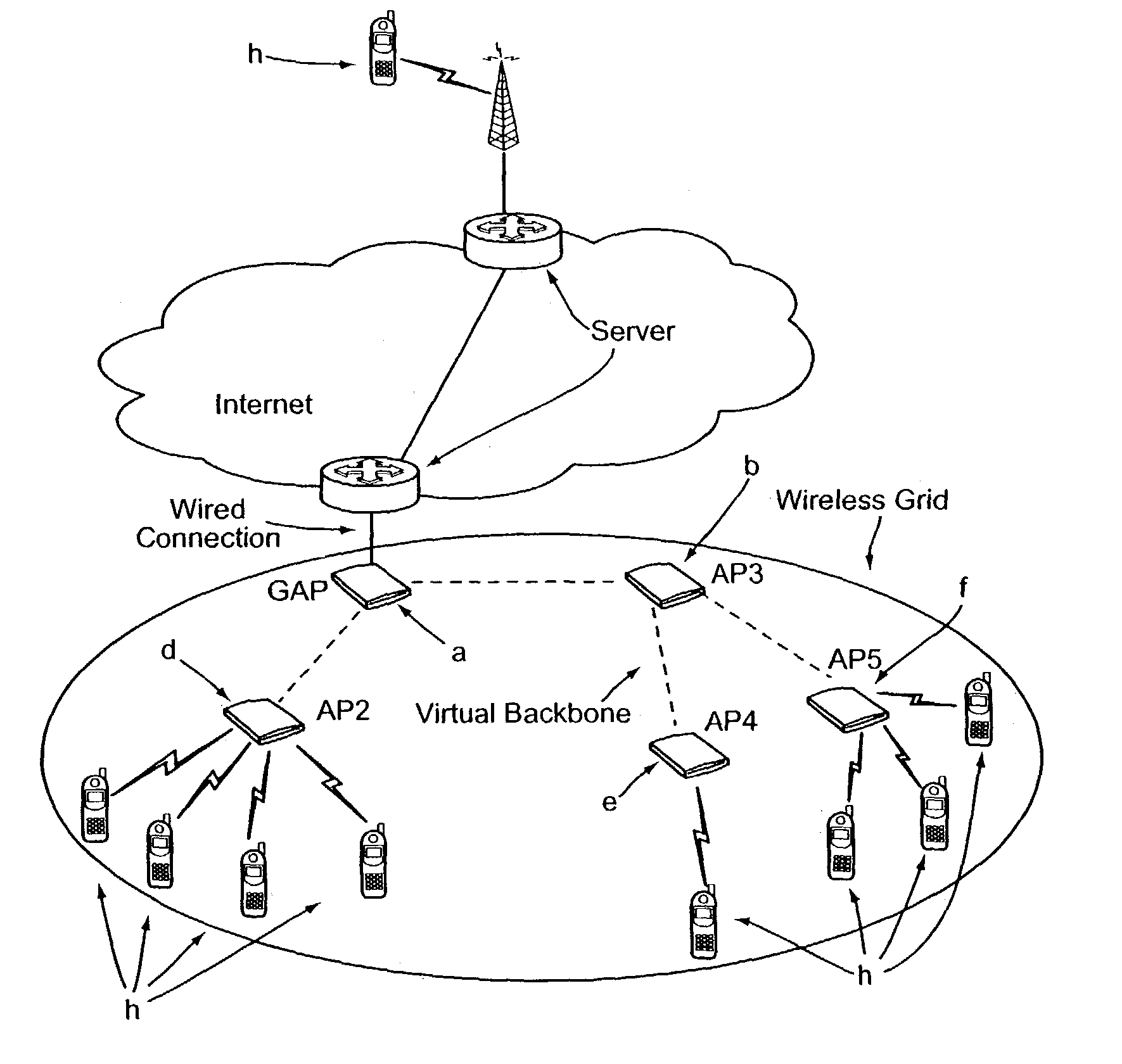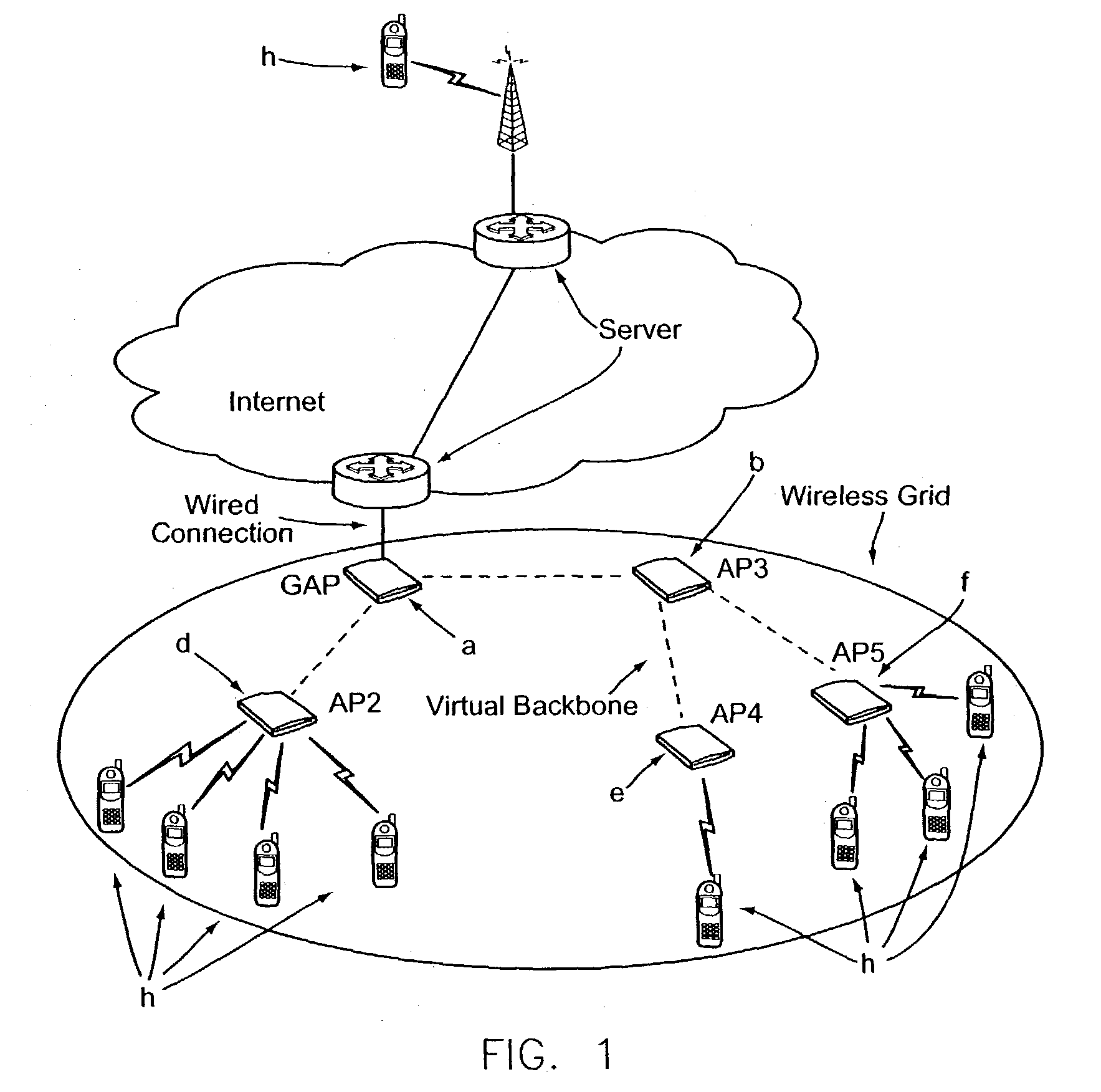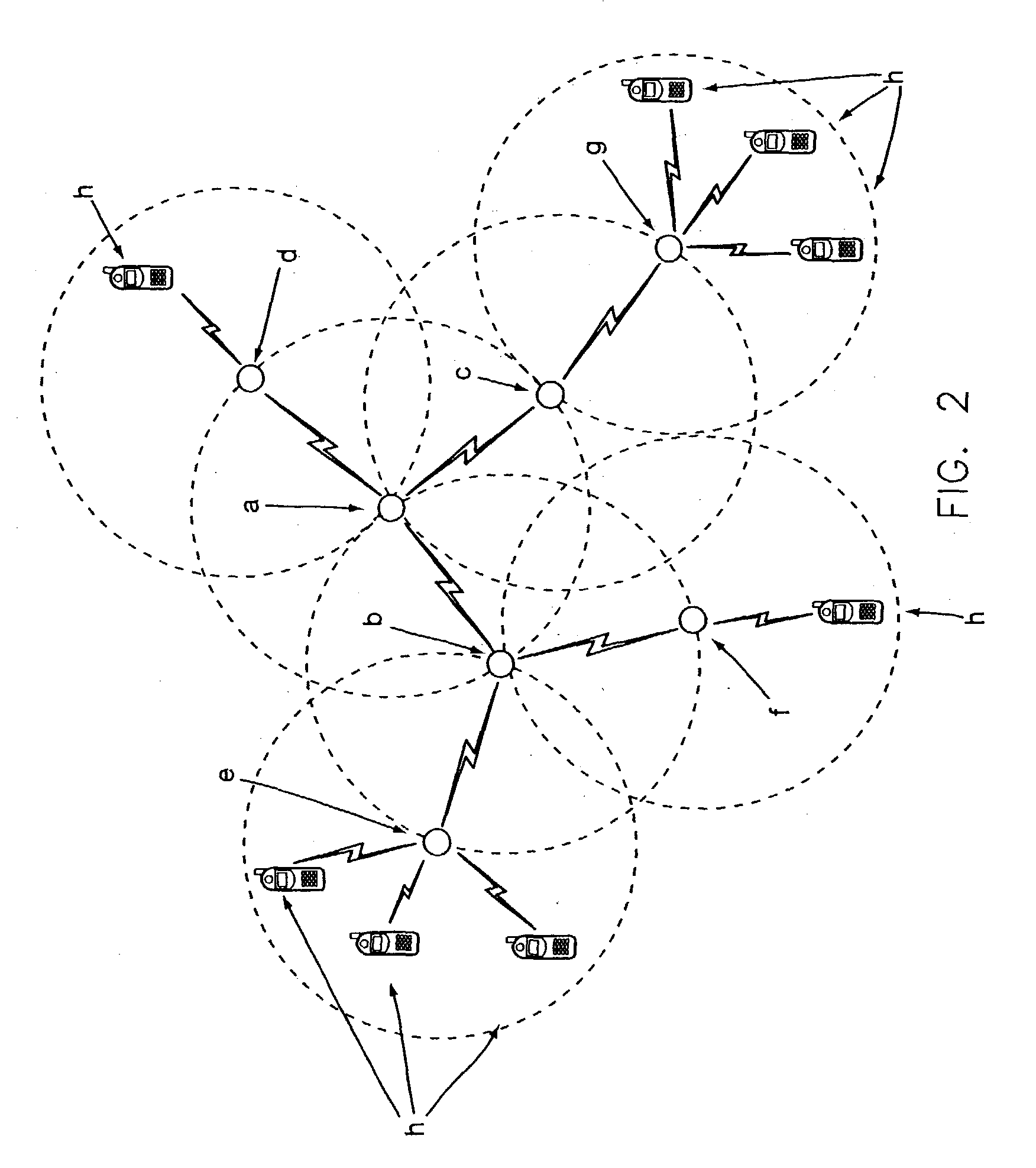Point coordinator control passing scheme using a scheduling information parameter set for an IEEE 802.11 wireless local area network
a technology of point coordinator control and scheduling information, which is applied in the field of communication transmission frame protocol, can solve the problems of ineconomically feasible stringing of communication cable or fiber, and no way to avoid interference from competing transmissions between aps, so as to avoid transmission collisions or interference
- Summary
- Abstract
- Description
- Claims
- Application Information
AI Technical Summary
Benefits of technology
Problems solved by technology
Method used
Image
Examples
Embodiment Construction
[0027] A system utilizing the proposed communications data frame that is compatible with the IEEE 802.11 WLAN standard is shown in FIGS. 1 and 2. The gateway access point (GAP) a is the primary access point directly connected to the wired internet. The local access points (LAPs) b, c, d, e, f, and g are not connected to the wired internet but will network with the internet through the GAP a. Each LAP or node indicated in the system represents a transmitter and receiver capable of operating to the IEEE 802.11 WLAN standard on one channel.
[0028] Referring to FIG. 2, the GAP a is the access point directly connected to the wired internet. This specific embodiment forms a multi-hop network, where the system is organized as a tree structure. As an alternative, it is assumed that other configurations or variations to the network would be contemplated and would fall within the scope of the invention. As a result of this arrangement in the described embodiment, some LAPs may not be within ra...
PUM
 Login to View More
Login to View More Abstract
Description
Claims
Application Information
 Login to View More
Login to View More - R&D
- Intellectual Property
- Life Sciences
- Materials
- Tech Scout
- Unparalleled Data Quality
- Higher Quality Content
- 60% Fewer Hallucinations
Browse by: Latest US Patents, China's latest patents, Technical Efficacy Thesaurus, Application Domain, Technology Topic, Popular Technical Reports.
© 2025 PatSnap. All rights reserved.Legal|Privacy policy|Modern Slavery Act Transparency Statement|Sitemap|About US| Contact US: help@patsnap.com



